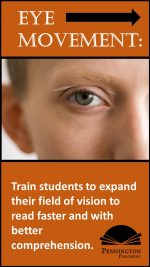The Sweet Sixteen Strategies for SAT® Success
These sixteen general strategies will make a significant difference on both the SAT® and ACT® test. Practice these on school tests and with SAT® and ACT® practice questions to score more points on the exams.
1. Be familiar with directions for each type of SAT® and ACT® question. Don’t waste precious time reading the directions.
2. Don’t waste too much time on any one test problem. The test problems are all roughly worth the same amount of points. Calculate how much time you will have at the beginning of each section of test problems. Then write down the projected ending time in the test margins. Use a digital watch to gauge your testing pace.
3. Don’t rush through the test problems. These reading sections are not light reading. Be careful not to read into the test problem more than what is really there. Accuracy is more important than speed.
4. Read each question stem (not the answer choices) twice before looking at the answers. It is easy to miss a key word if you only read the test problem stem only once.
5. Read all answer choices before selecting one. The first answer may look right, but another may be better. The questions can be intentionally very tricky in this regard.
6. Review only those answers of which you were unsure when first working through the questions. Don’t change already marked answers. More often than not, your first selection was best.
7. Look for the wrong answers first, not the right one. Use the process of elimination. It is easier to make a decision among fewer choices than many. Your guessing odds are substantially bettered with each wrong answer eliminated. Cross out all eliminated answers as you go.
8. Make sure to guess. Even if you have no idea how to answer a test problem, and even though you are penalized a slight amount (one-fourth-point deduction for a five-choice question and one-third point deduction for a four-choice question), it is best to not leave the answer blank. Of course, don’t guess on math grid-in questions.
9. Remember that each group of test problems generally begins with the easiest and ends with the most difficult. Be careful… the easiest may take more time than the harder ones, especially in the math sections. Since each test problem is worth the same amount of points, it makes sense to invest your time and effort on the questions that will be both easier and quicker to answer.
10. The test is designed so that most everyone gets THE EASY THIRD, some get THE MEDIUM THIRD, and few get THE HARD THIRD questions correct. Take advantage of this design with strategic guessing. If you must guess, select a simple answer for THE EASY THIRD and a difficult answer for THE HARD THIRD. The wrong answer choices are more obvious and less tricky with THE EASY THIRD and less obvious and trickier with THE HARD THIRD.
11. If the answer choice looks too good to be true, it just may be. Watch out for the tricks of the SAT, especially in THE MEDIUM THIRD and THE HARD THIRD sections.
12. Write in your test booklet. Write your answer choices next to the test problem numbers. Cross out eliminated answer choices and circle the numbers of the test problems that you want to review before answering. Circle important words in the reading and writing sections. In the math sections, make drawings to help you figure out word problems. Add information to graphs, drawings, and diagrams as you figure.
13. In the reading and writing test problems, match negative to negative or positive to positive regarding tone or vocabulary.
14. Transfer all of your answers when finished with each test sub-section. In other words, don’t go back and forth from the test booklet to the answer sheet, marking one at a time. This strategy will save you time and help you avoid mis-marking answer choices.
15. Absolute words, such as always or never, are usually part of incorrect answer choices. Exception words, such as frequently or mostly, are usually part of correct answer choices.
16. Think positively, stay focused on the test problem at hand, avoid distractions, and keep things in perspective. Remember that you can take the exams again.
The author of this article, Mark Pennington, has written the 56 lessons inEssential Study Skills (eBook) will teach your students to “work smarter, not harder.” Often, the reason why students fail to achieve their academic potential is not because they don’t try hard enough, but because they have never learned the basic study skills necessary for success. Students who master these skills will spend less time, and accomplish more during homework and study time. Their test study will be more productive and they will get better grades. Reading comprehension and vocabulary will improve. Their writing will make more sense and essays will be easier to plan and complete. They will memorize better and forget less. Their schoolwork will seem easier and will be much more enjoyable.
Lastly, students will feel better about themselves as learners and will be more motivated to succeed. Ideal curriculum for study skill, life skill, advocacy/advisory, opportunity program classes. The easy-to-follow lesson format of 1. Personal Assessment 2. Study Skill Tips and 3. Reflection is ideal for self-guided learning and practice.





 The author’s
The author’s